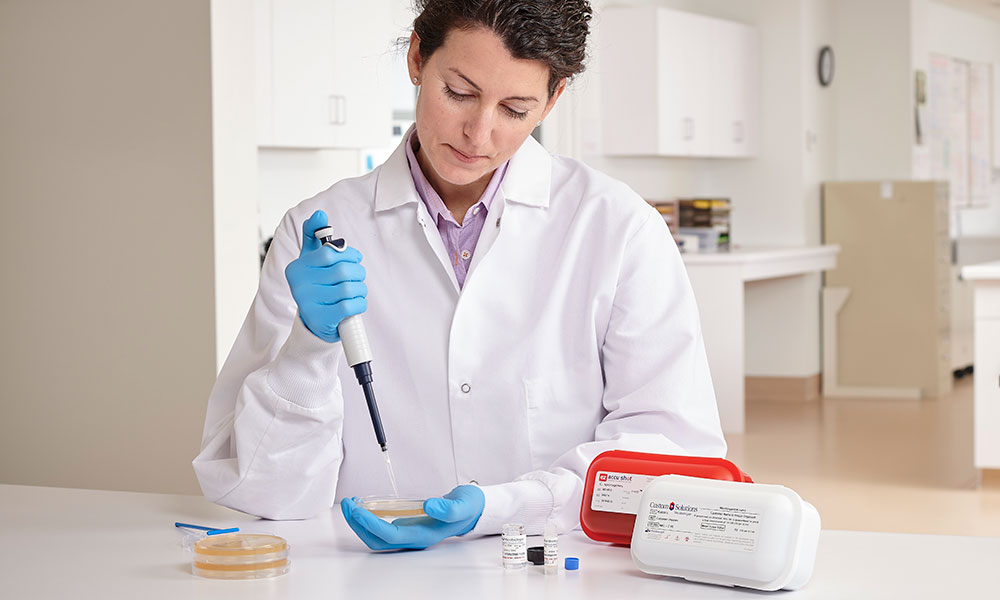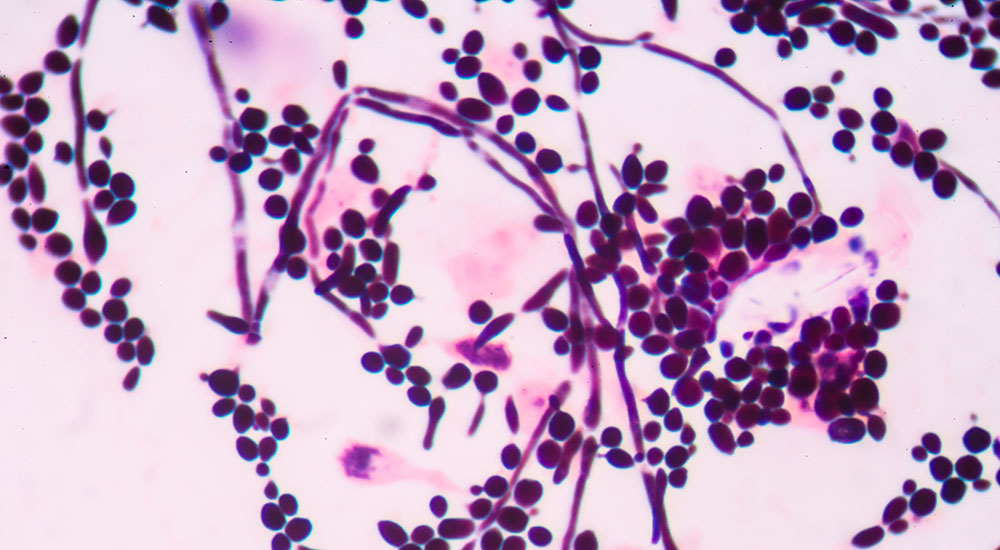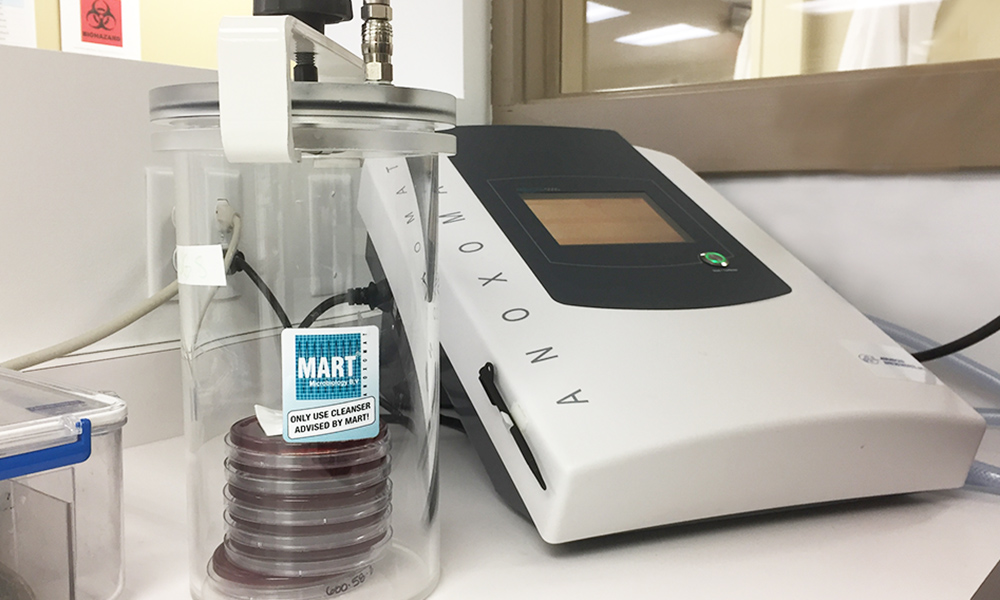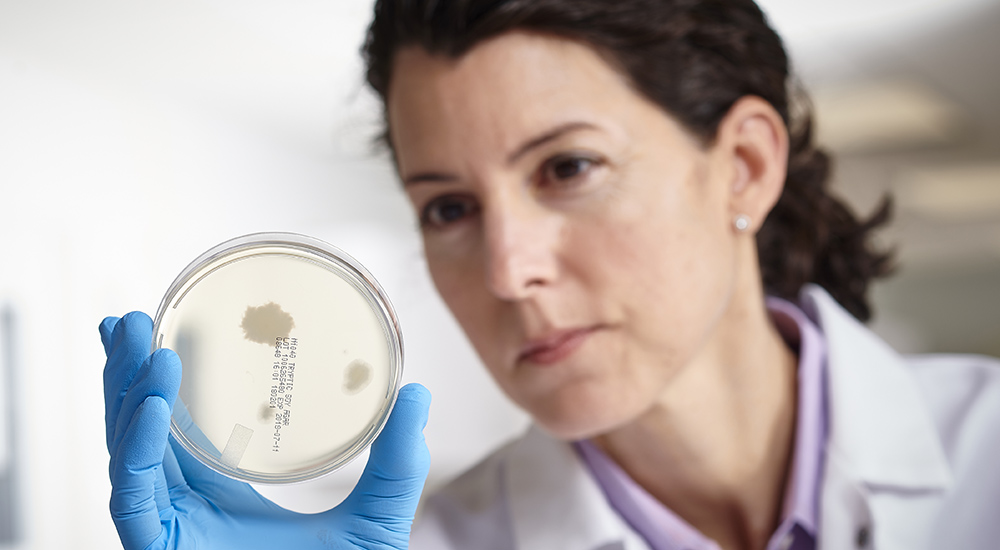ALL ARTICLES & RESOURCES
ALL ARTICLES & RESOURCES
Read articles about microbiology from Microbiologics’ experts and other field experts.
8 Best Practices for Growth Promotion Testing
The growth promotion test (GPT) can be a hassle, but it’s necessary for determining if a new batch of media is acceptable. Follow our best practices below to make your testing process as smooth as possible when using Microbiologics products to perform GPT. 1. Test in...
Dear Stanley: What is Mean Assay Value?
Dear Stanley, I use EZ-Accu Shot™ for growth promotion testing (GPT), and sometimes I don’t get counts within 50-200% of the count printed on the label. Is there something wrong with my media or the control? Sincerely, Beverly Fresno, CA Dear Beverly, Great question!...
How to Maintain Monthly Working Stock Cultures with Microbiologics QC Strains
Proper maintenance of quality control strains is essential for ensuring acceptable performance. Most strains produced by Microbiologics can be used for up to a month after reconstitution when correctly maintained. Follow these best practices and our maintenance plan...
Clinical Case File: Vaginitis
In a world where antibiotic resistant organisms are on the rise, including multi-drug resistant strains of N. gonorrhoeae, it’s more important than ever for clinicians and healthcare providers to provide proper and timely treatment for infections. Complex interactions...
Dear Stanley: Differences Between Atmospheres for Microorganism Growth
Dear Stanley, I want to make sure I’m using the right atmosphere to get good growth of my microorganisms. Can you explain the differences between aerobic, anaerobic, microaerophilic, and capnophilic atmospheres for microorganism growth? Beth from Salt Lake City, UT...
Neisseria gonorrhoeae: Combating a Multidrug-Resistant Organism
The global spread of antibiotic resistant sexually transmitted diseases (STD) has received increased attention over the past several years from health institutes including the World Health Organization (WHO) and the Centers for Disease Control and Prevention (CDC)....
How Food Labs Protect Consumers from STECs
The ongoing Escherichia coli O157:H7 outbreak linked to romaine lettuce grown in the Yuma, Arizona, region has captured the attention of food manufacturers, retailers, and consumers throughout the United States. According to the Centers for Disease Control and...
The Basics of Water Testing Quality Control
The water testing laboratory is the last line of defense against water-borne infections. Accurate results are critical to consumer safety. A robust Quality Assurance/Quality Control program will give the laboratory confidence in its results. Laboratories need reliable...
Relax During #LabWeek with These 9 Stress Relievers
You love being a microbiologist. Your passion for understanding microorganisms and the impact they have on every aspect of life fuels your long days in the lab. We know all too well that a busy lab and finicky microorganisms can leave even the most seasoned...
Non-Sterile Pharmaceuticals: Next Steps After Finding an Environmental Isolate
You’ve identified an organism in your environment. Now what? If you work in a non-sterile pharmaceutical manufacturing laboratory, chances are you’ve encountered this question. You know environmental monitoring doesn’t stop at detection, but what are the correct next...












